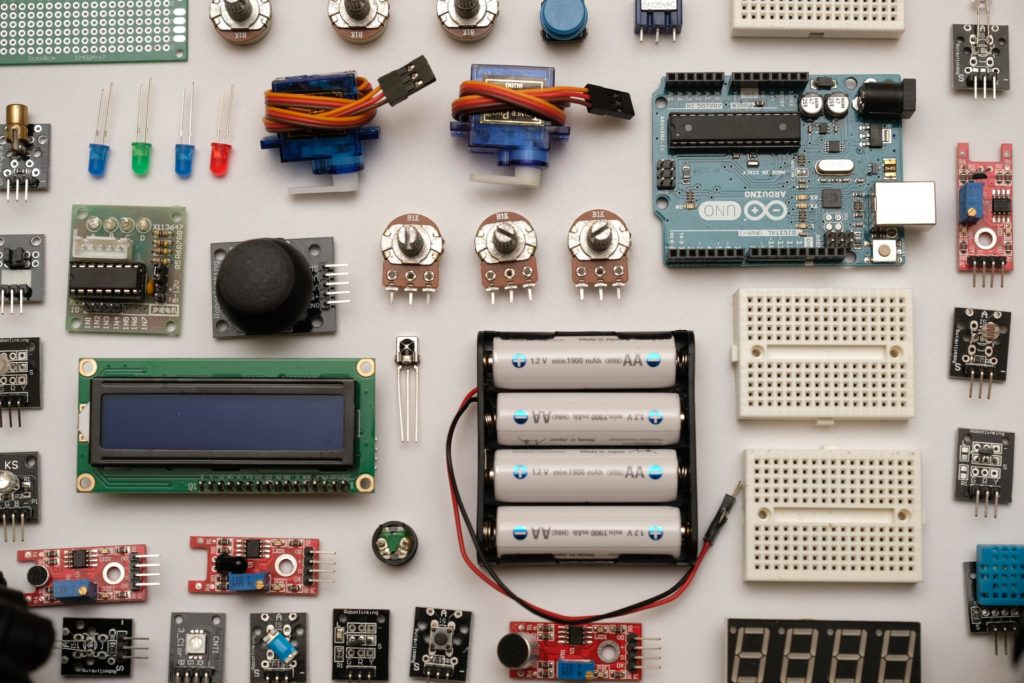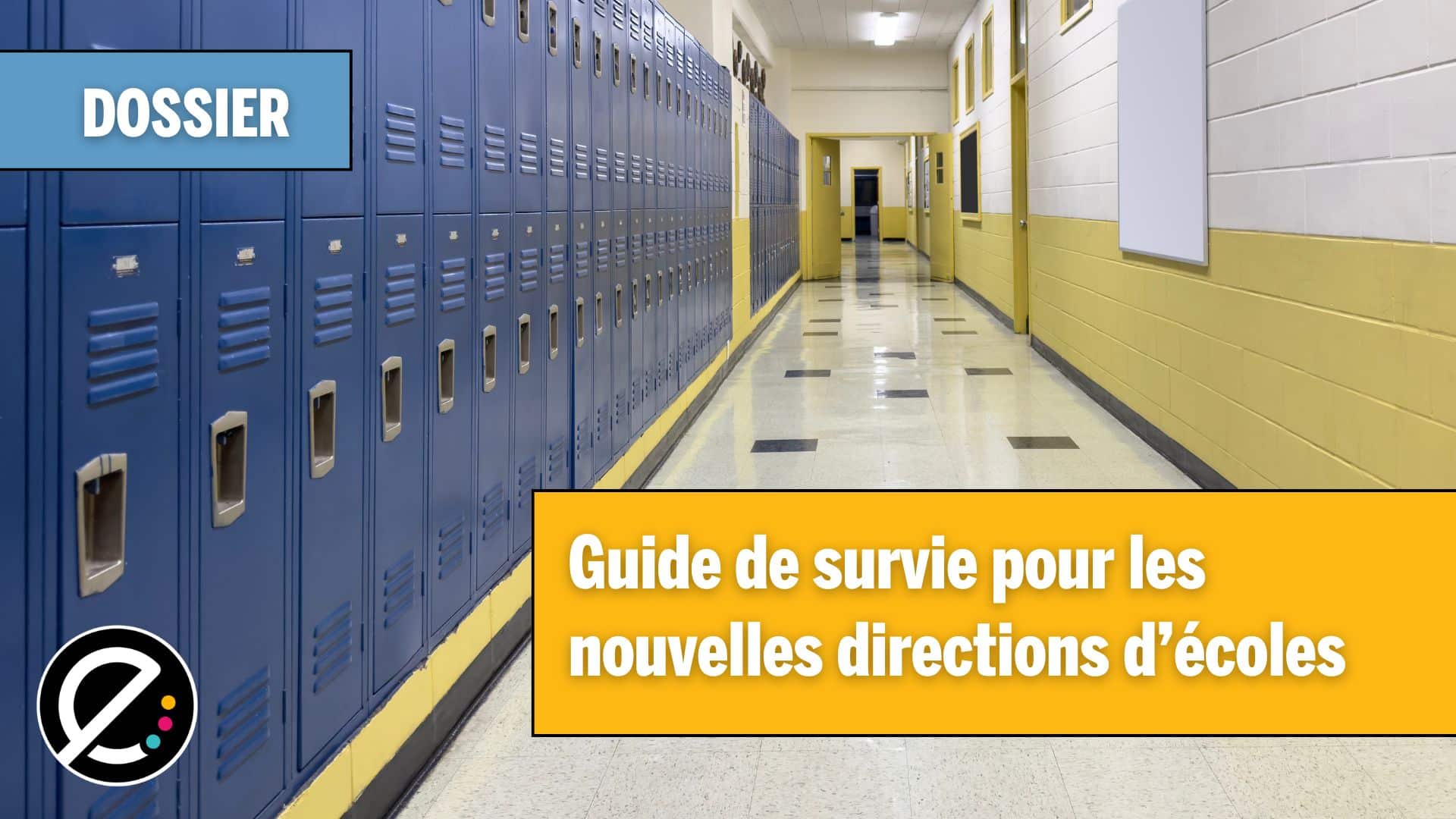Dans un rapport de recherche publié en 2020, le Laboratoire de formation et de recherche sur la littératie numérique de l’Université du Québec à Chicoutimi témoigne d’un premier recensement des laboratoires créatifs dans les écoles primaires et secondaires québécoises. Bien que le déploiement ait été entamé avant la pandémie grâce à différents incitatifs gouvernementaux, et que plusieurs avantages soient identifiés pour le développement de compétences chez les élèves, les auteurs du rapport soulèvent quelques questions sur le futur du déploiement de ces ateliers de fabrication.
La parution du rapport de recherche Laboratoires créatifs en milieux scolaires: état des lieux, stratégies pédagogiques et compétences, publié en plein cœur de la pandémie, est pratiquement passée inaperçue. La mise en place et l’utilisation des laboratoires créatifs dans les écoles étaient à ce moment au ralenti en raison des mesures sanitaires en vigueur et de l’enseignement à distance qui prévalait. Le rapport dresse néanmoins le premier portrait du déploiement des laboratoires créatifs dans les écoles primaires et secondaires du Québec depuis la publication du Plan d’action numérique en éducation (PAN) du ministère de l’Éducation en 2018.
De fait, la mesure 29 du PAN vise à soutenir l’acquisition d’équipement numérique à des fins pédagogiques, aussi appelés « combos numériques ». L’une des catégories d’équipements que les établissements scolaires peuvent acquérir est clairement identifiée « laboratoire créatif ». De plus, la mesure 2 vise à « accroître l’utilisation de la programmation informatique à des fins pédagogiques et didactiques » et l’on sait que les laboratoire créatifs comportent généralement une large dimension associée à la programmation.
La définition officiellement retenue par les auteurs du rapport est la suivante : « Un laboratoire créatif (LC) est un environnement flexible, physique (fixe ou mobile) ou virtuel de création, de conception, de fabrication qui peut être présent à tous les ordres d’enseignement. L’espace réservé à cet environnement peut être formel, c’est-à-dire que des locaux sont dédiés entièrement au laboratoire créatif, ou informel, c’est-à-dire que l’on transforme momentanément un espace tel que la bibliothèque ou les locaux d’arts pour le LC. Quoi qu’il en soit, l’espace doit être organisé de sorte à favoriser la créativité, mais aussi la collaboration, car c’est aussi un environnement où les différents acteurs scolaires (enseignants, apprenants, techniciens en travaux pratiques, etc.) collaborent pour atteindre des objectifs. Cette collaboration peut également s’étendre à l’extérieur de l’école, soit à la communauté (famille, entreprises, organismes, institutions, etc.). »
Premier recensement
Le projet de recherche, financé par le ministère de l’Éducation du Québec, visait entre autres à réaliser un premier recensement des laboratoires créatifs dans les écoles primaires et secondaires québécoises. L’équipe de recherche aurait souhaité rejoindre les 320 établissements privés et les 2 370 établissements publics du Québec. Après avoir fait circuler un premier questionnaire, elle a pu identifier 63 laboratoires créatifs, dont près de la moitié était situés dans des écoles secondaires. Ce portrait est cependant incomplet, de l’avis même des chercheurs, en raison du faible taux de réponse.
Quatre laboratoires, situés dans quatre régions différentes, ont ensuite été retenus afin de mieux comprendre les motivations derrière leur mise en place, ainsi que leur fonctionnement. Trois étaient du secteur public et un du réseau privé. Un laboratoire était destiné à l’enseignement primaire, deux à l’enseignement secondaire (un public et un privé) et un à la formation générale des adultes (mais desservait aussi occasionnellement des programmes en formation professionnelle).
Les motivations
Les chercheurs ont pu identifier cinq motivations principales pour justifier l’implantation de laboratoires créatifs en milieu scolaire.
- Mettre à disposition des élèves un espace de création, un lieu qui leur permet d’essayer, de tester, d’explorer et de manipuler en lien avec des cours, mais aussi pour le plaisir.
- Soutenir l’innovation et la créativité en offrant de la flexibilité aux élèves comme aux enseignants et encourager le changement, la différenciation et l’intégration disciplinaire.
- Favoriser la mise en action de compétences jugées importantes et parfois difficiles à concrétiser dans une salle de classe plus traditionnelle comme les compétences du 21e siècle, les compétences numériques, l’entrepreneuriat et des compétences en mathématiques, sciences et technologies.
- Motiver les acteurs scolaires en fournissant un environnement différent et attrayant pour enseigner et apprendre.
- Créer un espace collaboratif où il serait possible d’interagir avec la communauté.
Les usages
Selon les observations des chercheurs, la programmation et la robotique étaient les principales activités réalisées dans les laboratoires créatifs visités. Les ressources les plus utilisées étaient les imprimantes 3D, les tablettes numériques, les robots et les découpeuses (vinyle et laser). Les ressources les moins utilisées étaient les nanoordinateurs, les microcontrôleurs, le matériel de bricolage, l’équipement de soudure et la réalité virtuelle.
Deux cas d’usage type ont aussi été observés : des moments d’appropriation, où les élèves apprennent à utiliser les machines et le matériel à bon escient, et des moments de créativité, où ils se retrouvaient en résolution de problème, en projet ou en auto apprentissage assisté.
Comme « le processus d’implantation semble être à ses débuts », les phases d’appropriation et de découverte semblaient plus fréquentes. De même, les liens entre les activités réalisées et le développement des compétences n’étaient pas faits de façon systématique par les enseignants. D’ailleurs, les chercheurs ont constaté que « les projets réalisés par les apprenants […] sont souvent vus comme une activité “cadeau” ou “spéciale” à la fin d’un enseignement plus traditionnel ».
Finalement, ils ont aussi remarqué que « l’idée de construire sur l’erreur dans les laboratoires créatifs n’est pas nécessairement possible dans le contexte des écoles actuelles et des budgets alloués. Il y a donc un accompagnement soutenu des enseignants pour aider les apprenants à réussir assez rapidement dans leurs projets ». Les élèves pourraient faire preuve de créativité, mais de façon « très encadrée » afin de limiter l’utilisation des matériaux.
Les retombées
Pourtant, les retombées positives sont définitivement tangibles pour les élèves.
La résolution de problème et l’approche par projet ont été identifiées par les chercheurs comme étant les deux stratégies mises de l’avant pour développer les compétences des élèves lors de l’utilisation des laboratoires créatifs. Il s’agissait principalement de compétences disciplinaires en sciences et technologie ou de diverses compétences numériques.
« Les chercheurs ont constaté que l’arrimage entre ces stratégies, le développement des compétences et l’usage du laboratoire créatif avait comme effet de favoriser la motivation des jeunes, à augmenter leur curiosité pour la discipline et à les amener à approfondir leurs connaissances », lit-on dans le rapport.
De plus, un des usages ayant le plus de potentiel selon les chercheurs est l’approche interdisciplinaire. « C’est lors de partenariats entre différentes disciplines comme l’éducation physique et la science et technologie (vêtement connecté), ou encore l’art et la science et technologie (costumes interactifs), qu’il a été possible d’observer des projets complexes qui plaçaient la créativité et la liberté au centre de la réflexion. […] C’est également en parlant de ces projets que les apprenants ont le plus souvent mentionné leur motivation à aller à l’école, leur intérêt par rapport à ce genre d’apprentissage, l’impression d’avoir pu s’accomplir et pleinement se développer ainsi que le fait que les apprentissages réalisés au laboratoire créatif ont été réinvestis dans la vie de tous les jours. Il s’agit donc d’une belle occasion de réinvestir les domaines généraux de formation pour rendre les apprentissages authentiques et pour susciter la curiosité et la motivation des apprenants ».
Vision à long terme
Dans la dernière section du rapport, l’équipe de l’UQAC mentionne que les résultats « soulèvent aussi des questions à propos desquels il faudra probablement entamer une réflexion au Ministère, dans les CSS et dans les écoles ».
Il est entre autres mentionné que, bien que le ministère ait facilité l’achat d’équipements en lien avec les laboratoires créatifs via ses combos numériques, il ne semble pas avoir confié de mandat clair aux conseillers RÉCIT afin qu’ils guident les établissements scolaires dans l’achat et l’utilisation de matériel. De même, il serait actuellement difficile de comprendre les besoins réels de formation des enseignants, ce qui permettrait pourtant de mieux les soutenir dans leur appropriation de l’univers des laboratoires créatifs.
De plus, les données recueillies montrent que certains outils « vedettes » sont toujours cités en exemple. « Nous n’avons pu nous empêcher de nous questionner quant à la prévalence de l’effet “Wow!” dans le choix des technologies et des projets », écrivent les chercheurs. Ils se demandent : « Les outils les plus populaires sont-ils vraiment ceux qui ont le plus de potentiel en regard de l’apprentissage? ». Ils appellent d’ailleurs à la vigilance « afin d’éviter que le réseau scolaire entre involontairement dans un cycle de dépendance coûteux », en lien notamment avec la maintenance de certains appareils.
Par ailleurs, la question de l’évaluation des savoirs et des compétences développées dans un laboratoire créatif est identifiée comme « l’une des plus importantes et des plus pressantes ». « Lors de la recherche, il a été très difficile de cerner quels étaient les critères et les apprentissages ciblés par les enseignants dans le cadre de leurs projets au laboratoire créatif. En d’autres termes, mis à part le fait que les activités au LC se déroulent dans le cadre d’un cours disciplinaire, ces activités sont peu souvent évaluées de façon formelle et les apprentissages qui y sont réalisés peu réinvestis dans la classe ordinaire. »
Pourtant, comme le notent les chercheurs dans leur conclusion, « les enseignants ne peuvent pas constamment intégrer le LC “en plus” de la classe normale ou des activités plus directement liées au programme de formation ». Ils écrivent aussi : « Il importe donc de poursuivre la réflexion pour mieux arrimer les activités réalisées au LC avec les attentes du programme. L’idée étant que le temps passé au LC serve à l’enseignant d’évaluer et d’accompagner l’apprenant dans le développement de ces compétences ».
La question posée en conclusion du rapport résume assez bien les préoccupations de l’équipe de recherche : « Peut-être faut-il considérer offrir rapidement de la formation continue aux enseignants, travailler à organiser une progression des apprentissages en regard de la littératie numérique du préscolaire à la fin du secondaire et revoir nos critères de sélection des outils pour les LC? ».
Pour en savoir plus sur la mise en place d’un laboratoire créatif dans un établissement scolaire, surveillez notre dossier spécial à paraître dans les prochains jours (réservé aux abonnés du magazine École branchée).
Poursuivez votre lecture sur le même thème : Soutien pour le déploiement de laboratoires créatifs dans les écoles des Maritimes et collaboration avec le Québec






